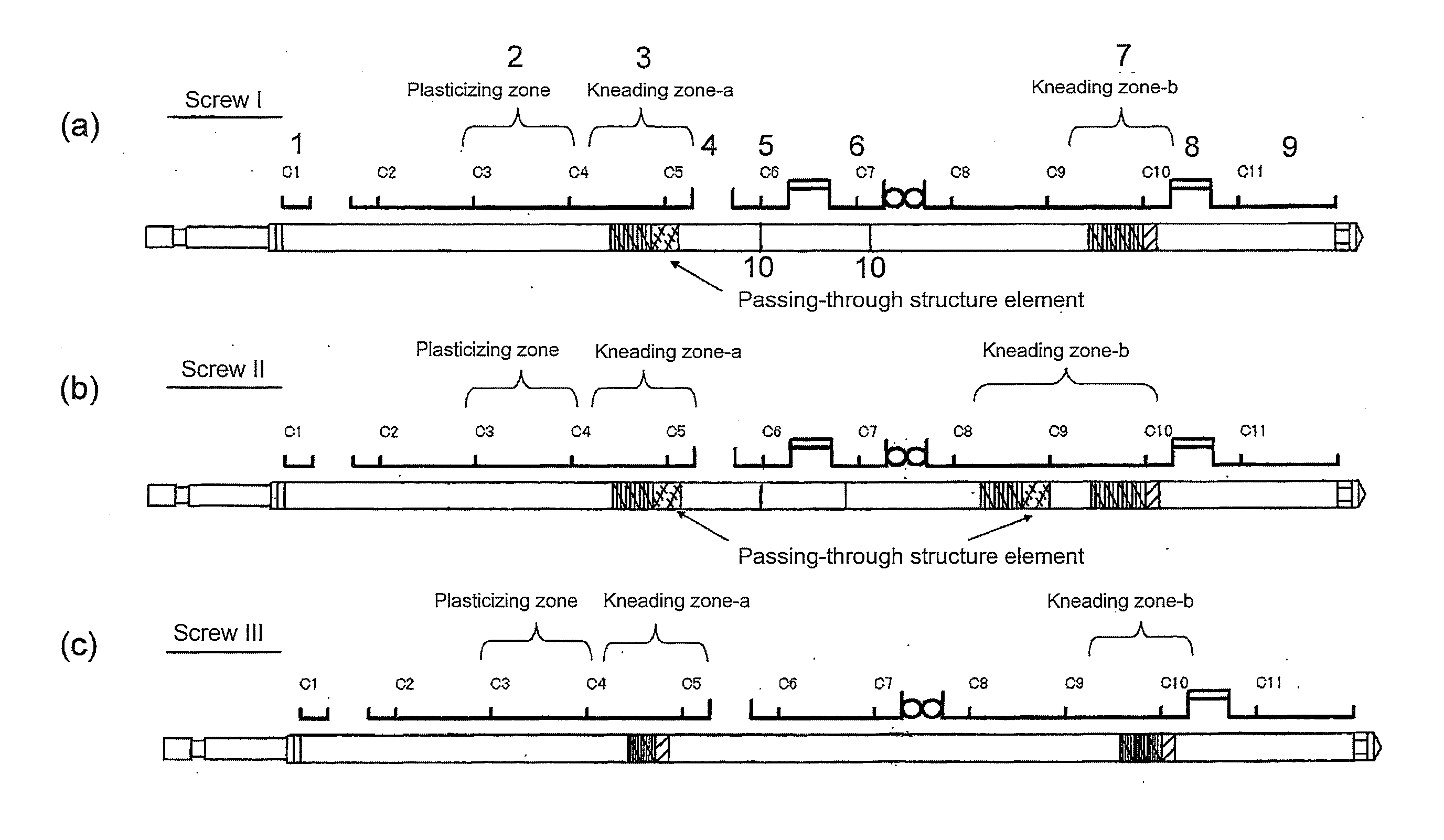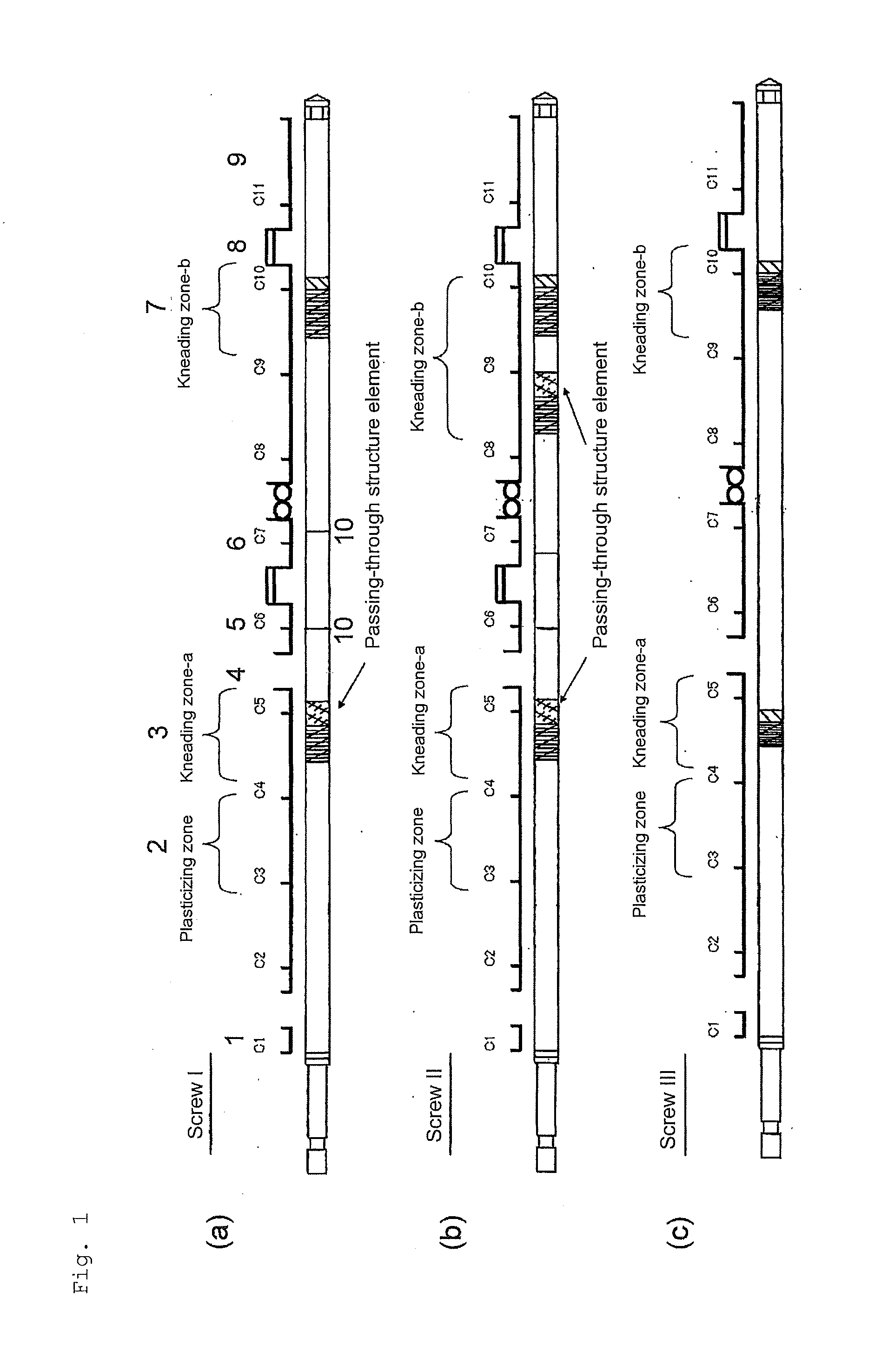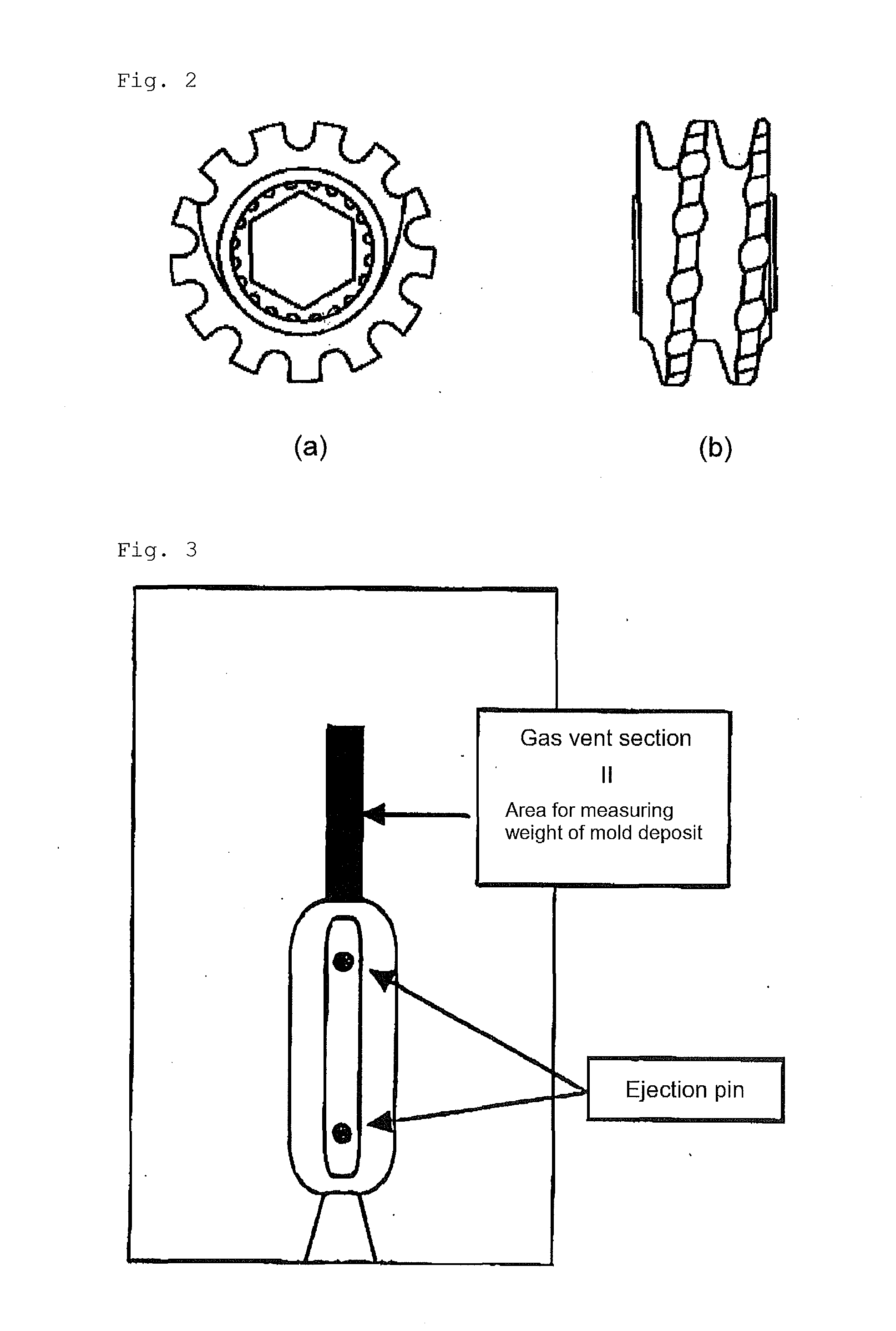Method for producing polyarylene sulfide resin composition
a technology of polyarylene sulfide and resin composition, which is applied in the field of producing polyarylene sulfide resin composition, can solve the problem of low level of contained chlorine, and achieve the effects of reducing flashing defects, high flowability and high quality
- Summary
- Abstract
- Description
- Claims
- Application Information
AI Technical Summary
Benefits of technology
Problems solved by technology
Method used
Image
Examples
example 1
Extruder
[0093]manufactured by The Japan Steel Works, LTD., TEX44 (screw diameter: 44 mm, L / D 38.5).
[0094]FIG. 1 (a) shows the schematic representation of the screw of the extruder.
C1: (1) raw material-feeding port
C3-C4: (2) plasticizing zone
C4-C5: (3) kneading zone (forward kneading: element containing notch zone)
C5: (4) open vent
C6: (5) the second vacuum vent port
C7: (6) auxiliary material-feeding port
C9-C10: (7) kneading zone (forward kneading: reverse flight)
C10: (8) the first vacuum vent port (9) die zone (10) Sealing zones were installed at the front and the rear of the second vacuum vent port (5).
(2) Extrusion Conditions
[0095]Cylinder temperature: from resin feed side toward die head side, see below:
(C1) 50-(C2) 100-(C3) 300-(C4) 320-(C5) 320-(C6) 320-(C7) 280-(C8) 280-(C9)280-(C10)280-(C11)280-(die) 300
(3) Screw Shape (an Element Having a Passing-Through Structure)
[0096]An element having a notch zone as shown in FIG. 2.
(4) Raw Materials to be Used
(A) PAS Resin
[0097]A-1: Manuf...
examples 2-8
, Comparative Examples 1-5
[0107]Pellets were obtained in the same manner as in Example 1 except for changing conditions according to Tables 1 and 2 as follows: the shape of extruder screw used, extrusion condition, shear rate, kneading time, the type of each component to be compounded, and the like. Meanwhile, in Comparative example 4, a small amount of eye discharges was found at the time of extrusion, and thus good extrusion cannot be obtained. Further, in Comparative example 5, a large amount of eye discharges was found at the time of extrusion, and thus good extrusion cannot be obtained.
examples 9-10
[0108]By using TEX65 (screw diameter 65 mm, L / D 38.5) manufactured by The Japan Steel Works, LTD. as an extruder, pellets were obtained in the same manner as in Example 1 except for setting the cylinder temperature as follows and changing extrusion conditions as shown in Table 1, and were then evaluated. Meanwhile, the screw used was the same type as screw II.
[0109](C1)50-(C2)250-(C3)330-(C4)330-(C5)330-(C6)330-(C7)300-(C8) 280-(C9)280-(C10)280-(C11)280-(die)300
[0110]The evaluation method for Examples and Comparative example is as follows:
>
[0111]6 g of a sample, 15 ml of acetone and 30 ml of purified water (manufactured by KANTO CHEMICAL CO., INC.) were placed in a flask at room temperature (15-25° C.), shaken for 30 minutes using a shaker, and then filtered through a separating funnel. The pH of the supernatant was measured with a pH meter.
>
[0112]Test pieces (width: 10 mm, thickness: 4 mm) prepared according to ISO3167 were molded and measured according to ISO527-1,2.
>
[0113]Combust...
PUM
| Property | Measurement | Unit |
|---|---|---|
| temperature | aaaaa | aaaaa |
| melt viscosity | aaaaa | aaaaa |
| melt viscosity | aaaaa | aaaaa |
Abstract
Description
Claims
Application Information
 Login to View More
Login to View More - R&D
- Intellectual Property
- Life Sciences
- Materials
- Tech Scout
- Unparalleled Data Quality
- Higher Quality Content
- 60% Fewer Hallucinations
Browse by: Latest US Patents, China's latest patents, Technical Efficacy Thesaurus, Application Domain, Technology Topic, Popular Technical Reports.
© 2025 PatSnap. All rights reserved.Legal|Privacy policy|Modern Slavery Act Transparency Statement|Sitemap|About US| Contact US: help@patsnap.com



